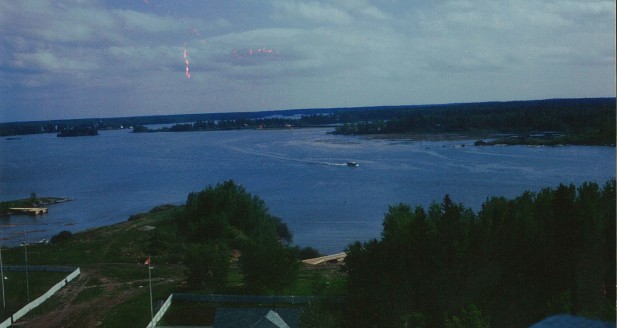Due to unforeseen circumstances, including the conditions of winter roads in our province, the Indigenous Food Sovereignty is being rescheduled for June 21 to June 23, 2016. We would like to apologize for any inconvenience, however it is important that we acknowledge the transportation needs of our people. For any questions, kindly please call 204-947-2397
Too often we hear stories of food insecurity, of people going hungry, in Indigenous communities. Those stories are important, but so are the stories of how we are spending time on the land, growing, gathering, hunting, fishing, and trapping. In many cases, these traditional food practices; the knowledge, the ability and skills around the practices are already present in communities. But it often exists in small pockets, and there aren't a lot of opportunities to share. It's time to share stories that can help "reignite the fire within our communities," as Byron calls it. For the I
Jackson Osborne, a Cree elder and resident of Pimicikamak Cree Nation (Cross Lake), has been collecting traditional knowledge on and about the history of his nation’s traditional land for about thirty years. He has dedicated his life to documenting changes occurring in the natural environment, along Pimicikamak’s shorelines and its surrounding environments, through photos and videos. Recently Jackson has archived over three hundred photos that depict the status of the land before and after hydro development. Jackson shared a few of his photos with Wa Ni Ska Tan's most recent Newsletter pu
Interchurch Council of Hydropower: Power North: Positive Action Plan More and more non-Indigenous Canadians feel a need for reconciliation with Indigenous people. They believe there is a need to make things right, to live together in a better way. But what exactly might reconciliation look like? Hydropower in Manitoba provides a good example. Manitobans are plugged into a massive hydropower system that fundamentally alters the five largest rivers in the province and six of the 12 largest lakes. This has left deep wounds on the landscape and in many people’s hearts
The gallery exhibition offers a multi disciplinary perspective of the effects of hydropower in northern Manitoba. Through personal stories, portrait, and paintings we are offered a small window into the deep and personal impacts hydro development has had on culture, families, infrastructure, the economy, and the environment. The exhibit will be on display until January 23rd, and pieces will be available directly from the artist afterwards. Thanks to the Interchurch council of Hydropower for hosting the opening of this event, and all those who offered poems, stories, art, and their attendance.
Manitoba Hydro fundamentally alters the five largest rivers in the province and six of the 12 largest lakes. It does so according to values and oversight mechanisms from the past. That is bound to change. The question is, how soon? Hydro has had its way with Manitoba's water for 50 years. The extensive, ongoing damage it causes to traditional industries, community well-being and ecosystems has been discussed elsewhere. Now it's time to focus on bringing our utility into the current era. Last week, Premier Greg Selinger accepted the Clean Environment Commission's recommendations to reva
“The report presents a substantial and thoughtful approach to the regulation of one of our most important water bodies, Lake Winnipeg,” Minister Nevakshonoff said. “Thank you to members of the commission and all those who took part in the public hearings. I commend your commitment to ensuring Manitoba is a sustainable province today and for future generations.” The report was completed as part of a request for a final license for Lake Winnipeg Regulation and includes the CEC’s review and findings from public hearings that included input from a range of public and important sta
On December 4th and 5th, 2014, the first meeting of what would later become Wa Ni Ska Tan: An Alliance of Hydro Impacted Communities took place at the Friendship Centre in Thompson, Manitoba. The meeting was attended by 62 people, including representatives from 13 Cree and Anishinaabe First Nations, five NGOS, and 11 researchers. Importantly, the meeting represented the first opportunity for many of these communities to share their experiences as well as to identify ways of grieving these losses and to move forward. This first meeting would also inform a SSHRC Letter of Intent by iden





